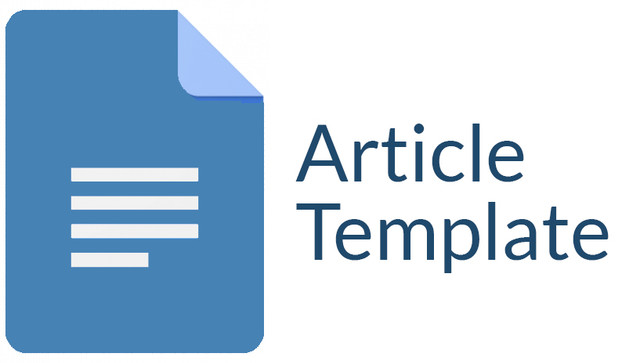Contribution of Students' Learning Motivation and Numerical Ability to The Learning Outcomes of Chemistry Calculations During the Pandemic.
DOI:
https://doi.org/10.30736/seaj.v5i1.558Keywords:
Numerical ability, classical random sampling, Likert scale modelAbstract
The purpose of this study was to determine and analyze the contribution of students' learning motivation and numerical ability to the learning outcomes of chemistry count material. This research is quantitative research. The research method was carried out utilizing sampling technique using a proportional classical random sampling technique. Data was collected using multiple-choice tests and Likert scale model questionnaires. Respondents in this study were students of class Ten Science Senior Hight School One Karangdowo total 90 student. Analysis of the data used is a technique of partial correlation analysis and linear regression of two predictors. The results of this study indicate that: there is a significant positive contribution between learning motivation and numerical ability together to the learning outcomes of chemistry in the matter of chemistry. Partially, it shows that there is no significant positive contribution between learning motivation and learning outcomes for the matter of chemistry. Partially, it shows that there is a significant positive contribution between numerical ability on learning outcomes of chemistry calculations. The effective contribution of learning motivation is 0.65% and numerical ability is 8.47%. This shows that during a pandemic, learning motivation contributes less than numerical abilities.Downloads
References
Abed, E. R.-A. (2016). Developing a Numerical Ability Test for Students of Education in Jordan: An Application of Item Response Theory. International Education Studies, 9(1), 161-173.
Arikunto, S. (2011). Prosedur Penelitian Suatu Pendekatan Praktik. Jakarta: Rineka Cipta.
Asrori, M. (2011). Psikologi Pembelajaran. Bandung: Wacana Prima.
Ayodelle, O. F. (2014). Teacher Instructional Time, Student–Engaged Time and Numerical Ability as Predictors of Student Achievement in Senior Secondary School Chemistry. Journal of Emerging Trends in Educational Research and Policy Studies (JETERAPS), 5(3), 377-380.
Cahyani, A., Listiana, I. D., & Larasati, S. P. (2020). Motivasi Belajar Siswa SMA pada Pembelajaran Daring di Masa Pandemi Covid-19. Jurnal Pendidikan Islam, Volume 3 No. 01 2020,, 123-140.
Cahyono, T. D. (2016). Kontribusi Kemampuan Numerik dan Kreativitas terhadap Prestasi Blajar Siswa Pada Materi Pokok Hidrolisis Kelas XI MIA1 dan XI MIA 5 SMA Negeri 2 Karanganyar Tahun Pelajaran 2015/2016. Jurnal Pendidikan Kimia (JPK), 5( 2), 81-88.
Dariyo, A. (2013). Dasar-Dasar Pedagogi Modern. Jakarta: PT Indeks.
Fatoke, A.O, Ogunlade, T.O, &Ibidiran,V.O. (2013). The Effects of Problem-Solving Instructional Strategy and Numerical Ability on Students’ Learning Outcomes. The International Journal Of Engineering And Science, 2(10), 97-102.
Fudyartanta, K. (2010). Tes Bakat dan Perskalan Kecerdasan. Yogyakarta: Pustaka Pelajar.
Hanafiah,Nanang & Suhana,Cucu. (2012). Konsep Strategi Pembelajaran. Bandung: Refika Aditama.
Hodo, Z. (2016). Students’ Motivation Factors: Albania Case. Journal of Research & Method in Education (IOSR-JRME), 6(6), 22-29.
Izzatunnisa, L., Suryanda, A., Kholifah, A. S., & Loka, C. (2021). Motivasi Belajar Siswa Selama Pandemi dalam Proses Belajar dari Rumah. Jurnal Pendidikan, Vol. 9, No. 2, Juli 2021, 7 - 14.
Middlecamp,Catherin & Kean,Elizabeth. (1985). Panduan Kimia Dasar. Jakarta: Gramedia.
Pardimin, S. &. (2017). Upaya Peningkatan Motivasi dan Prestasi Belajar IPA Melalui Penerapan Model Pembelajaran JIGSAW pada Siswa Kelas IX B SMP N 9 Yogyakarta. Jurnal Penelitian dan Evaluasi Pendidikan.Wiyata Dharma, 5(2), 125-134.
Putriana, C., & Noor, N. L. (2021). Pengaruh Pembelajaran Daring terhadap Motivasi dan Prestasi Belajar. MATH LOCUS: Jurnal Riset dan Inovasi Pendidikan Matematika, Vol. 2, No. 1, 1~6.
Rehman, Asifa & Haider,Kamal. (2013). The Impact of Motivation on Learning of Secondary School Students in Karachi : An Analytical Study. Educational Research Internation, 2(2), 139-147.
Romadhoni,Evan, Wiharna,Ono, & Mubarak,Ibnu. (2017). Pengaruh Motivasi Belajar Terhadap Hasil Belajar Peserta Didik Pada Mata Pelajaran Gambar Teknik. Journal of Mechanical Engineering Education, 4(2), 228-234.
Sardiman, A. (2011). Interaksi dan Motivasi belajar mengajar. Jakarta: Rajawali Grafindo Persada.
Septaria, K. (2022). KEMAMPUAN BERTANYA VERSUS HASIL BELAJAR KOGNITIF MAHASISWA: ANALISIS KORELASI KEMAMPUAN BERTANYA PADA LEVEL MAHASISWA IPA. EDUPROXIMA (Jurnal Ilmiah Pendidikan IPA) Universitas Bhinneka PGRI Tulung Agung, 4(2), 60-71.Slameto. (2010). Belajar dan Faktor-faktor yang empengaruhinya. Jakarta: PT. Renika Cipta.
Septaria, K., & Dewanti, B. A. (2021). Implementation of project based learning on student reasoning on COVID-19 disaster mitigation. Prisma Sains: Jurnal Pengkajian Ilmu dan Pembelajaran Matematika dan IPA IKIP Mataram, 9(1), 20-27.
Septaria, K., Sholihin, M., Kholiq, A., Hayati, E., & Maulana, V. I. P. (2021). ANALISIS DAN UPAYA PENINGKATAN PEDAGOGIC & TEACHING SKILL PADA GURU MADRASAH IBTIDAIAH. Prosiding SNasPPM, 6(1), 196-202.
Sugiharti,Gulmah & Habeahan,B J W. (2018). Influence of Learning Model Using Laboratory and Numeric Ability to Student Learning Result on Thermochemical Material. International Education Studies, 11(5), 154-160.
Sugiyono. (2010). Metode Penelitian Kuantitatif, Kualitatif, dan R & D. Bandung: Alfabeta.
Uno, H. B. (2019). Teori Motivasi dan Pengukurannya. Jakarta: Bumi Aksara.
Downloads
Additional Files
Published
How to Cite
Issue
Section
License
Authors who publish with this journal agree to the following terms:
- Authors retain copyright and grant the journal right of first publication with the work simultaneously licensed under a Creative Commons Attribution-ShareAlike 4.0 International License that allows others to share the work with an acknowledgment of the work's authorship and initial publication in this journal.
- Authors are able to enter into separate, additional contractual arrangements for the non-exclusive distribution of the journal's published version of the work (e.g., post it to an institutional repository or publish it in a book), with an acknowledgment of its initial publication in this journal.
- Authors are permitted and encouraged to post their work online (e.g., in institutional repositories or on their website) prior to and during the submission process, as it can lead to productive exchanges, as well as earlier and greater citation of published work (See The Effect of Open Access).

This work is licensed under a Creative Commons Attribution-ShareAlike 4.0 International License.










